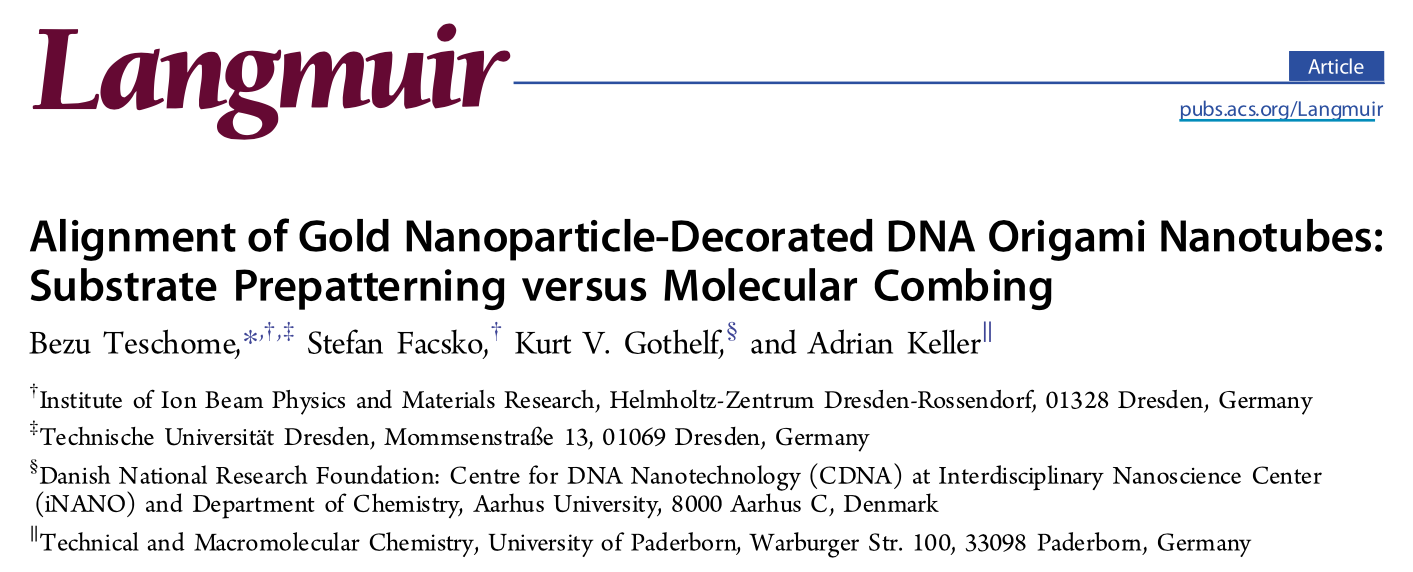PAPER: Alignment of Gold Nanoparticle-Decorated DNA Origami Nanotubes: Substrate Prepatterning versus Molecular Combing

Langmuir. 2015, doi: 10.1021/acs.langmuir.5b02569
Teschome B, Facsko S, Gothelf KV, Keller A
Institute of Ion Beam Physics and Materials Research, Helmholtz-Zentrum Dresden-Rossendorf , 01328 Dresden, Germany.
Technische Universität Dresden, Mommsenstraße 13, 01069 Dresden, Germany.
Danish National Research Foundation: Centre for DNA Nanotechnology (CDNA) at Interdisciplinary Nanoscience Center (iNANO) and Department of Chemistry, Aarhus University , 8000 Aarhus C, Denmark.
Technical and Macromolecular Chemistry, University of Paderborn , Warburger Str. 100, 33098 Paderborn, Germany.
Abstract
DNA origami has become an established technique for designing well-defined nanostructures with any desired shape and for the controlled arrangement of functional nanostructures with few nanometer resolution. These unique features make DNA origami nanostructures promising candidates for use as scaffolds in nanoelectronics and nanophotonics device fabrication. Consequently, a number of studies have shown the precise organization of metallic nanoparticles on various DNA origami shapes. In this work, we fabricated large arrays of aligned DNA origami decorated with a high density of gold nanoparticles (AuNPs). To this end, we first demonstrate the high-yield assembly of high-density AuNP arrangements on DNA origami adsorbed to Si surfaces with few unbound background nanoparticles by carefully controlling the concentrations of MgCl2 and AuNPs in the hybridization buffer and the hybridization time. Then, we evaluate two methods, i.e., hybridization to prealigned DNA origami and molecular combing in a receding meniscus, with respect to their potential to yield large arrays of aligned AuNP-decorated DNA origami nanotubes. Because of the comparatively low MgCl2 concentration required for the efficient immobilization of the AuNPs, the prealigned DNA origami become mobile and displaced from their original positions, thereby decreasing the alignment yield. This increased mobility, on the other hand, makes the adsorbed origami susceptible to molecular combing, and a total alignment yield of 86% is obtained in this way.
